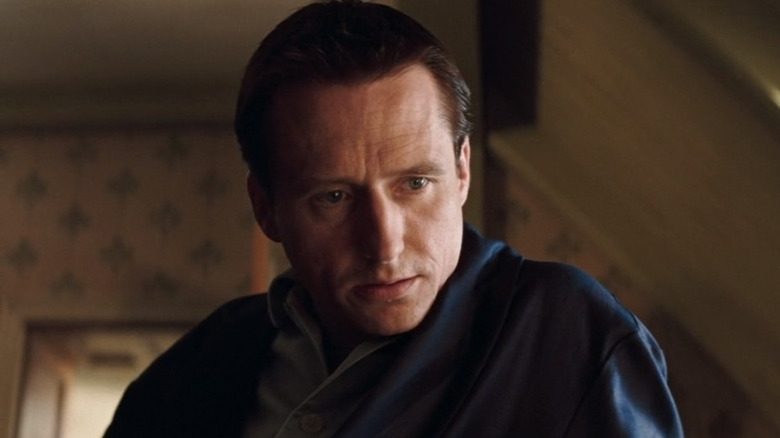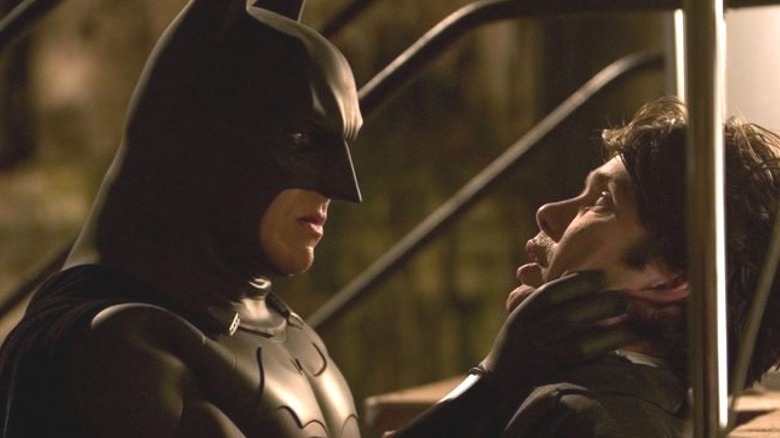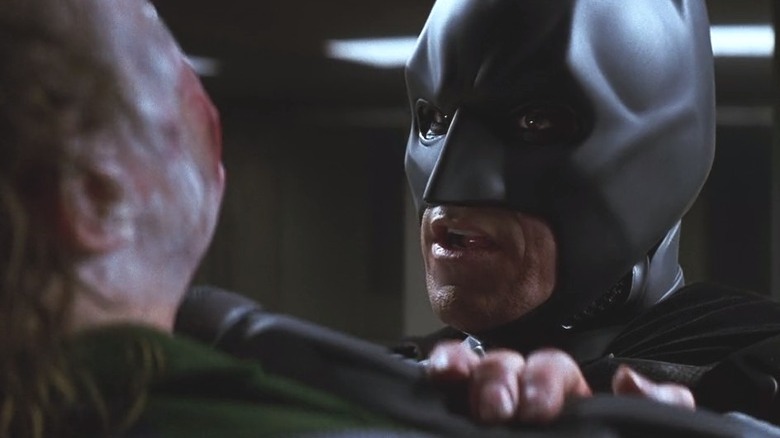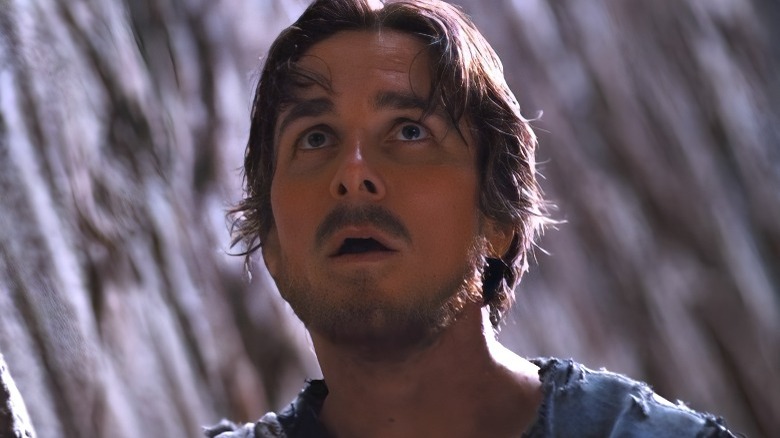'Why Do We Fall, Bruce?' - How One Quote Perfectly Defines Nolan's Dark Knight Trilogy
Christopher Nolan's "The Dark Knight" trilogy has its share of great lines, but one seemingly innocuous phrase uttered in the beginning moments of the first film went on to become the heart of the franchise. After young Bruce Wayne (Gus Lewis) falls into a well, Thomas Wayne (Linus Roache) carries him back to the house and says, "Why do we fall, Bruce? So we can learn to pick ourselves up." In the moment, the line simply felt like a sweet comforting gesture between a father and son. However, Bruce continues to embody the sentiment through all three films, continuously picking himself up when he is knocked to the ground, both physically and emotionally.
Nolan defined Batman for a new generation with his trilogy of films, making the DC Comics hero more real and grounded. Christian Bale's take on the Caped Crusader became the quintessential framework others would be compared to, much like Michael Keaton before him. But the underlying thread of the trilogy, based on the repeated need to climb from the depths of failure to triumph over adversaries, is what set the franchise apart from the Batman projects that came before it.
At his core, Batman is a character knocked to his back from a young age. Becoming Batman was the transformation from a scared boy into a figure who uses fear to intimidate those who prey on the innocent. Nolan's trilogy took that concept and ran with it, knocking Bruce on his back and forcing him to pick himself back up over and over again.
Bruce Wayne utilized physical prowess in Batman Begins
After Bruce Wayne bounces back from the death of his parents and begins training himself to become the embodiment of fear, he comes face to face with fear itself in the form of Dr. Jonathan Crane, aka Scarecrow (Cillian Murphy). Audiences are treated to a great Batman introduction when he first appears to take out Carmine Falcone (Tom Wilkinson) and his goons at a dock. But his next confrontation doesn't go his way as Crane hits him with his fear toxin.
This is the first moment we see Batman fail, the first villain to come out on top when face-to-face with the vigilante. Still suffering from the effects of the fear toxin when he wakes up, Wayne consults Lucius Fox (Morgan Freeman) to start working on an antidote in case Crane uses it again. After experiencing his first defeat, Wayne dons the cowl again to go after Crane and eventually the man behind him, Ra's al Ghul (Liam Neeson).
Batman is a character that doesn't know the meaning of the word quit; he keeps going. Once his eye is on the target, he doesn't stop until he comes out on top. Of course, he is only human, which means he stumbles and falls. Nolan used this aspect of Batman to allow his father's words to be the theme of the first movie. It worked so well that he doubled down on the theme for the follow-up.
He had to control his emotions in The Dark Knight
Batman is more than a physical character. Sure, he beats his share of villains to a pulp in the comics and live-action adventures, but he is also a detective and a deeply flawed emotional character. His journey of taking his grief and turning it into a driving force behind dressing up as a six-foot bat puts his inability to process his emotions front and center. In the second film of the "Dark Knight" trilogy, Bruce Wayne has to pick himself up in ways that go beyond the physical.
Batman stopped Ra's al Ghul and Jonathan Crane because he discovered their end goal and put himself between them and victory. Once The Joker (Heath Ledger) rises to face Batman, he has a new and more complicated villain to face. Joker doesn't challenge the hero physically; he isn't going to fight him toe-to-toe. Instead, he challenges him psychologically, blackmailing him into revealing his identity to avoid killing more innocent people. Eventually, Joker is able to break him down emotionally, striking him where it hurts him the most.
When he gives Batman the choice of saving either Harvey Dent (Aaron Eckhart) or Rachel Dawes (Maggie Gyllenhaal), he hands him his biggest failure and destroys him emotionally. While he sets out to save Gotham, he is unable to save the citizen of the city that was the most important to him. The Clown Prince of Crime forces Batman to emotionally recuperate and confront him once again in a crucial attempt to prevent the city from total collapse.
He had to do both in The Dark Knight Rises
The finale of Christopher Nolan's trilogy sees Bruce Wayne come face-to-face with all of the aspects of the franchise at once. His new adversary, Bane (Tom Hardy), pulls out all the stops to challenge him on every front. He begins by breaking his back, overcoming the older and broken-down bat, and placing him in the world's deepest and most spirit-breaking prison. Then, he allows Bruce to watch as he plunges Gotham into darkness, completing the total breakdown of Batman physically and emotionally.
What follows is Wayne's journey from a completely broken man to one of resolve and redemption. He recovers from his physical injuries and becomes stronger while working through the emotional damage of his past failures and embracing the fear he used against his enemies. His physical climb from the depths of the prison mirrors his ascent from the depths of despair and failure, allowing him to rise up to face Bane and defeat him once and for all.
Nolan presented his theme for all three movies in one simple phrase uttered by a character doomed to die in the beginning moments of the franchise. He then commenced putting Batman through physical and emotional turmoil so he could learn to pick himself back up. His repeated need to do so came to good use when he was forced to climb out of injury, defeat, and a literal hole in the ground to save Gotham City when he was at his lowest.



